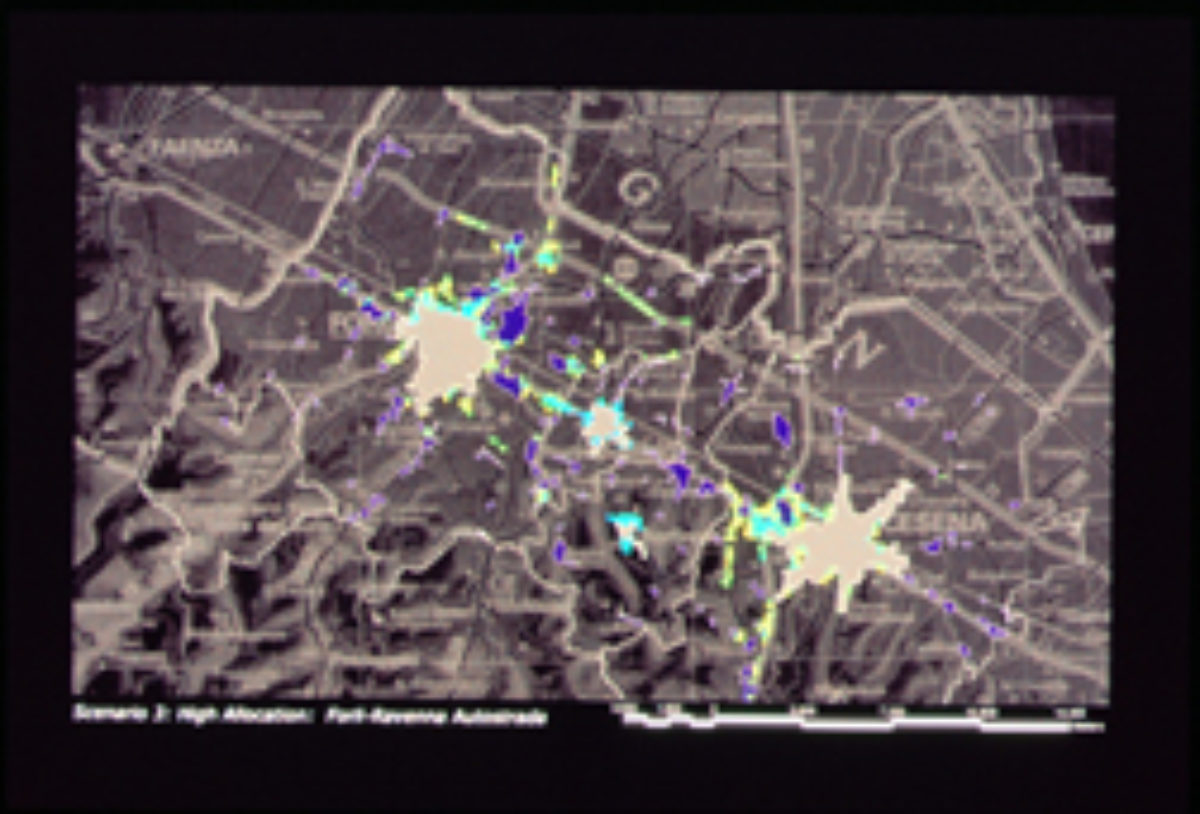Territorialization in the Region of Romagna, Italy

In large measure, territorialization is an old and venerable process by which land is settled, converted to productive use, preserved and conserved in some cases, and a geography is made. It almost goes without saying, for instance, that urbanization takes place in a broader territory. Terms and phrases like “urban region” or “urban areas and their hinterlands” certainly imply a broader terrain than the cities and towns involved and signal ideas of economic and other interaction, as well as building, across an area more extensive than the cities and towns themselves. Also, recognizable gradients, from central and inner urban zones to peripheries and per-peripheries, turn the idea of a territory inward by suggesting ways in which its urban landscape can be spatially qualified.
Conversely, territories are also often the sites of non-urban production, of agriculture, forestry, coastal activity and natural preservation, inscribing different patterns of use across a landscape and placing other demands on land and its margins. Moreover, the concept of a territory is rarely fixed, changing in both predictable and unpredictable ways, as the scheme of urban and non-urban use, influencing its character, matures under the auspices of different technological, political and other circumstantial regimes. Nevertheless, in spite of these vagaries and intellectually compartmentalized depictions, the territory itself is of significance as both a registry and component in urban and non-urban development processes and, ultimately, because of how it must be considered and made.
An essential aim of the study is to develop a comprehensive and temporally longitudinal understanding of the cultural process, or processes, by which the territory in Romagna, Italy, has been and continues to be made, shaped and produced. It does not aim to yield planning proposals, specific designs, nor political blueprints. Rather, it attempts to contribute to an academic understanding of territorialization as an important contemporary phenomenon and explore various scenarios of possible spatial reconsideration and development, under varying assumptions, in a manner that allows them to qualify most closely with practices that might be inferred to as belonging to the culture production of territorial space.
The study is conducted at the Graduate School of Design, Harvard University, under the direction of Professor Peter G. Rowe, in collaboration with the University of Bologna’s School of Architecture in Cesena, under the direction of Professor Gianni Braghieri, with support from a grant from the Regional Government of Emilia-Romagna and the Province of Forlì-Cesena.
Gianni Braghieri, University of Bologna School of Architecture
Cesena, Emilia-Romagna, Italy
Sponsored by the Regional Government of Emilia-Romagna, and the Province of Forlì-Cesena